Animals
-
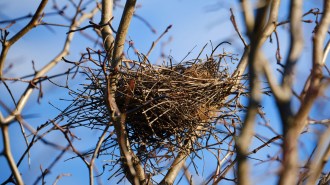 Physics
PhysicsExperiments hint at why bird nests are so sturdy
A bird’s nest is a special version of a granular material. Lab experiments and computer simulations explain its quirky behavior.
-
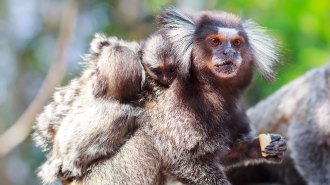 Animals
AnimalsBaby marmosets may practice their first distinctive cries in the womb
Ultrasounds tracking fetal mouth movements in baby marmosets pinpoint the early development of the motor skills needed for vocalization.
By Anna Gibbs -
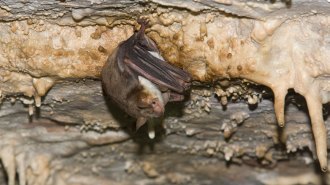 Life
LifeThese bats buzz like wasps and bees. The sound may deter hungry owls
Researchers have identified what may be the first known case of a mammal mimicking an insect.
By Jake Buehler -
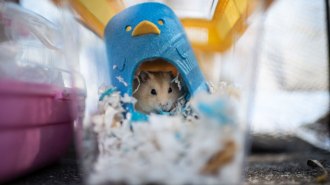 Animals
AnimalsSome hamsters are extremely susceptible to COVID-19
Golden Syrian hamsters used in research and popular as pets can become infected with SARS-CoV-2 with very low doses of the virus, a new study suggests.
-
 Animals
AnimalsDog breed is a surprisingly poor predictor of individual behavior
Despite the popular conviction that dog breeds are associated with specific traits, breed accounts for only 9 percent of behavioral differences.
By Anna Gibbs -
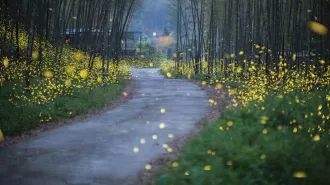 Animals
AnimalsWhy you should care about ‘The Insect Crisis’
A new book explains why insect populations are dwindling and why that’s a problem.
-
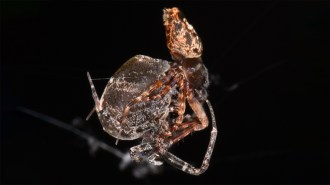 Animals
AnimalsThese male spiders catapult away to avoid being cannibalized after sex
In a leap for survival, male Philoponella prominens spiders leverage hydraulic pressure to extend leg joints and fling themselves off hungry females.
-
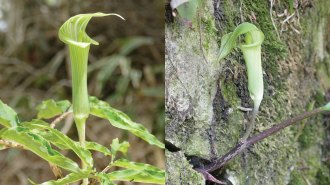 Plants
PlantsThese flowers lure pollinators to their deaths. There’s a new twist on how
Some jack-in-the-pulpit plants may use sex to lure pollinators. That's confusing for male fungus gnats — and deadly.
By Susan Milius -
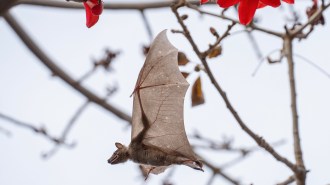 Animals
AnimalsMost bats don’t echolocate in broad daylight. Here’s an exception
Egyptian fruit bats in Tel Aviv regularly navigate by sound during midday hours to avoid obstacles and forage, despite their excellent vision.
-
 Science & Society
Science & Society‘Paradise Falls’ thrusts readers into the Love Canal disaster
‘Paradise Falls’ tells the story of the Love Canal environmental tragedy from the point of view of the people who lived near the former dump site.
-
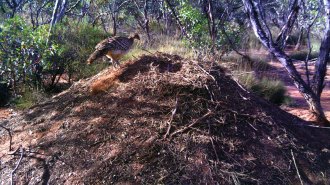 Life
LifeHow a mound-building bird shapes its Australian ecosystem
In Australia’s mallee woodlands, malleefowl dutifully construct mounds to incubate their eggs, redistributing nutrients across the landscape.
By Jake Buehler -
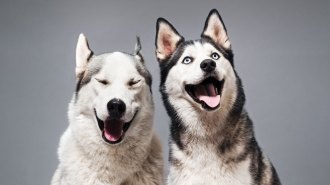 Animals
AnimalsHow do we know what emotions animals feel?
Animal welfare researchers are studying the feelings and subjective experiences of horses, octopuses and more.